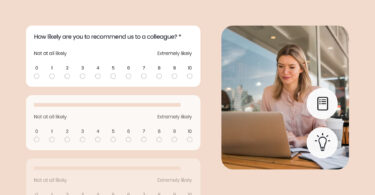Customer service is the beating pulse of your business. For your company to thrive, customer satisfaction has to be a priority. And feedback forms are one of the best ways to understand your customers and gather insights to improve the customer experience.
This article deals with all you need to know about customer feedback forms including tips to design an effective feedback form.
Table of contents
What is a feedback form?
A feedback form is an engagement tool that allows you to reach customers and collect their opinions and ideas. Gathering feedback directly from those you wish to serve helps you gain keen insights into the customer experience.
Research suggests that 89% of customers are more than willing to give feedback if they’re properly shown how to do so. A good feedback form makes it easier for customers to leave comments and share their experiences in a quick and convenient way.
You can use customer feedback forms across various channels such as emails, pop-ups on your website, or live chat.
Why is a feedback form important for a business?
What customers feel about your business matters as your success depends on them sticking around with you. Customer feedback also helps you improve the standard of your products/services.
For example, you can use the customer’s feedback form responses as a means to engage them further through personalized campaigns.
Even negative feedback gives you an opportunity to solve the immediate problem and boost customer satisfaction.
Here’s why you should use a feedback form in your business:
- Helps understand your customers’ needs: A well-designed feedback form lets you learn what your customers like and don’t like about your business. With these insights, you can tweak things to serve your customers better.
- Improves customer experience: If you consistently listen and seek feedback, you can stay informed on changing customer needs. Ultimately, this leads to better customer satisfaction and experience.
- Makes customers feel important and involved: Your customers will know their opinion is heard and considered.
Types of feedback forms
The best feedback forms do not come as an all-in-one solution. It is important for businesses to customize the feedback forms to suit the type of answers they seek. Only then can you garner accurate feedback and have actionable insights to grow your company.
Some of the popular feedback forms are covered in this section.
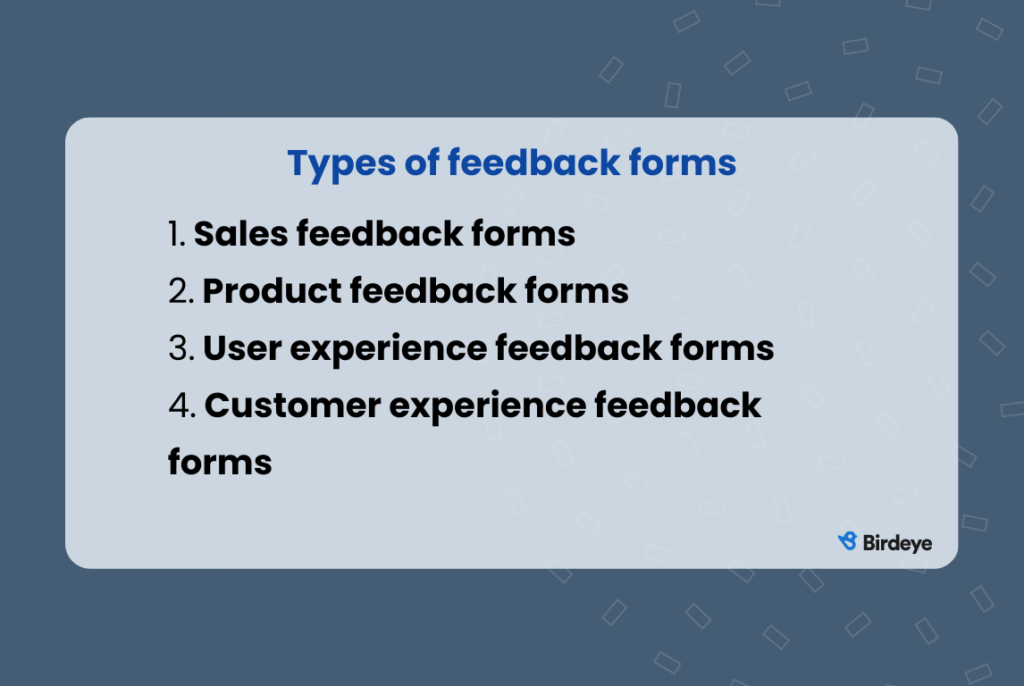
Sales feedback forms
A sales feedback form assists in gathering customers’ opinion about your sales process and strategies. It helps you gain insights to improve your sales strategies, improve conversion rate, qualify leads better, and grow your revenue.
To collect sales feedback:
- Follow up on your customers via email or text to understand their recent sales experience.
- Send an email notification confirming the purchase with a feedback form to collect customer feedback on your sales process. Consider offering an incentive (e.g., prize draw, giveaway, etc.) to encourage the customer to leave feedback.
- Requesting customers who did not purchase also to leave their feedback on the process.
Product feedback forms
Product feedback form provides insights into how customers perceive your product offerings. Treat this as an ongoing effort to gather customer feedback to improve your product.
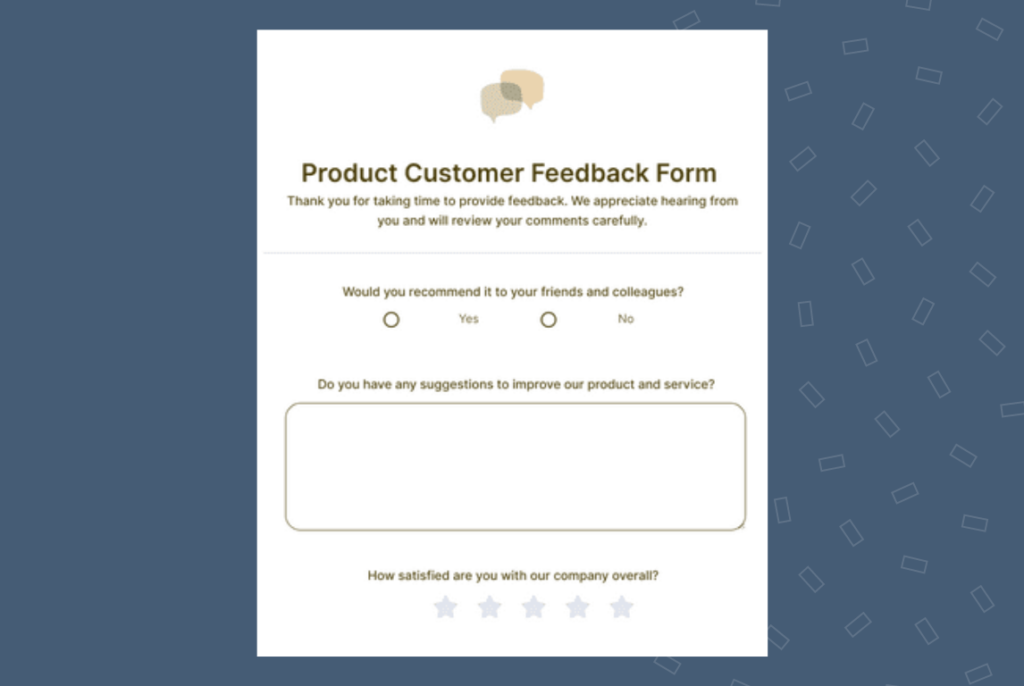
Product feedback forms can:
- Dive deeper into the customer’s opinions by asking specific questions around the product’s utility, affordability, and overall experience.
- Help you discover the “why” behind their views, along with what drives their purchasing decisions, tastes, and preferences.
- Conduct usability tests with customers to gather more suggestions and ideas on ways to improve the product.
- Help you test product ideas by letting a small group of customers test them and then sharing their views via the form.
User experience feedback forms
User experience feedback helps your business learn more about how customers interact with your apps, website, product or software. It also helps reduce the risk of wasting time and money on features that customers don’t want.
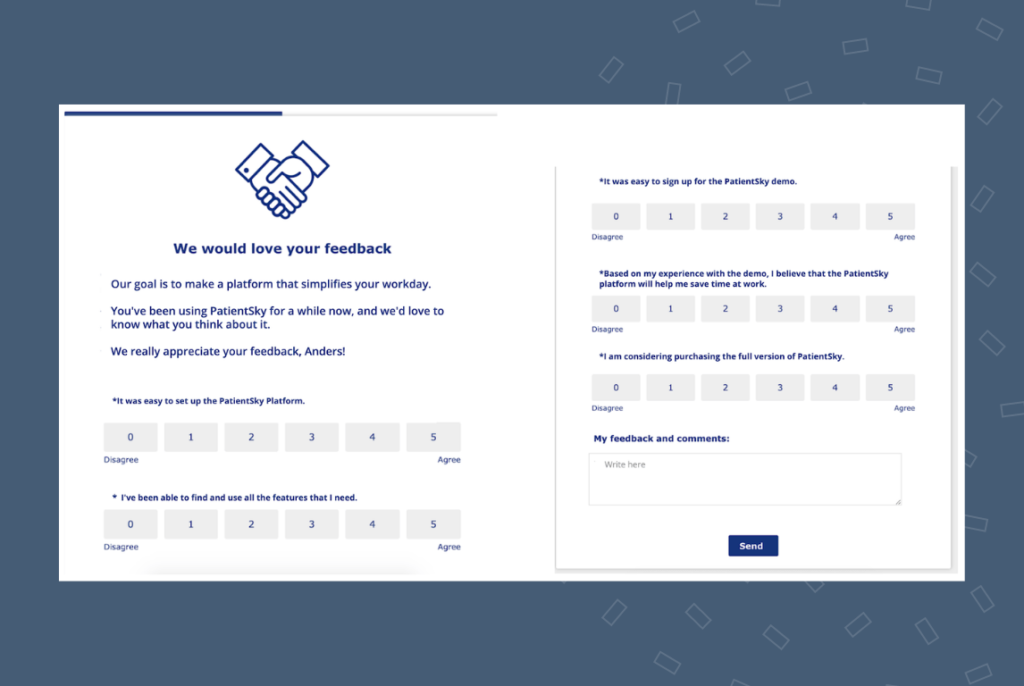
As a result, you can focus on developing and improving features customers find valuable. This could be a bug fix or suggestions for new products or functionality.
In your user feedback form:
- Prompt your customers to select their interests or features they really like. Allowing customers to share their preferred features helps to identify customer interests, establish buyer personas, and accurately target customers.
- Ask questions that allow customers to share critical feedback about your products, services, and brand awareness right when customers are available to discuss.
Customer service feedback forms
Customer service feedback forms allow customers to share their experiences regarding the services received. These are great for collecting intel about frontline staff and customer care teams, in their efforts to provide quality service.
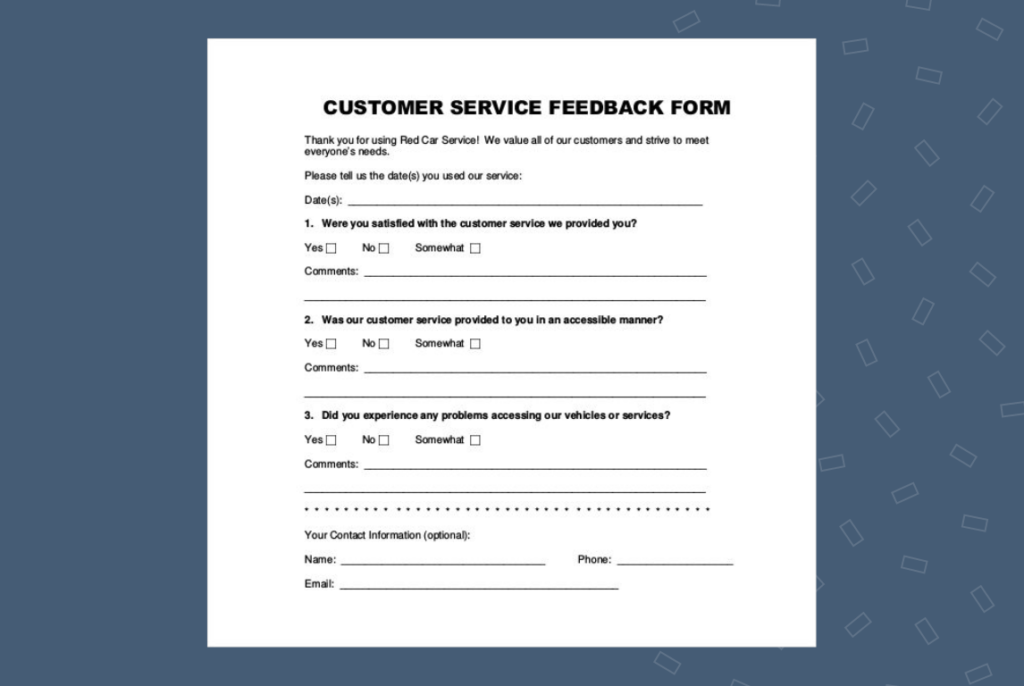
Customer service feedback forms are often surveys with ratings systems, asking customers to rate their experiences. And it can ask anything you wish to know, including welcome experiences, questions answered, and support received.
For best results:
- Employ customer-facing surveys to ask questions about their online experiences or how your service compares to competitors.
- Use Customer Satisfaction Score (CSAT) assessments to gauge their levels of satisfaction with a purchase, product, or overall interactions.
How to design the best customer feedback form
The best customer feedback form encourages your customers to open up and share their opinions with the business without any restraint. And design of the feedback form plays a major role in making that happen.
The easier the process is, the more forthcoming your customers would be in their feedback. If they’re not transparent about their interactions, their responses won’t be helpful.
Follow these tips to design an effective feedback form that encourages customers to leave honest feedback.
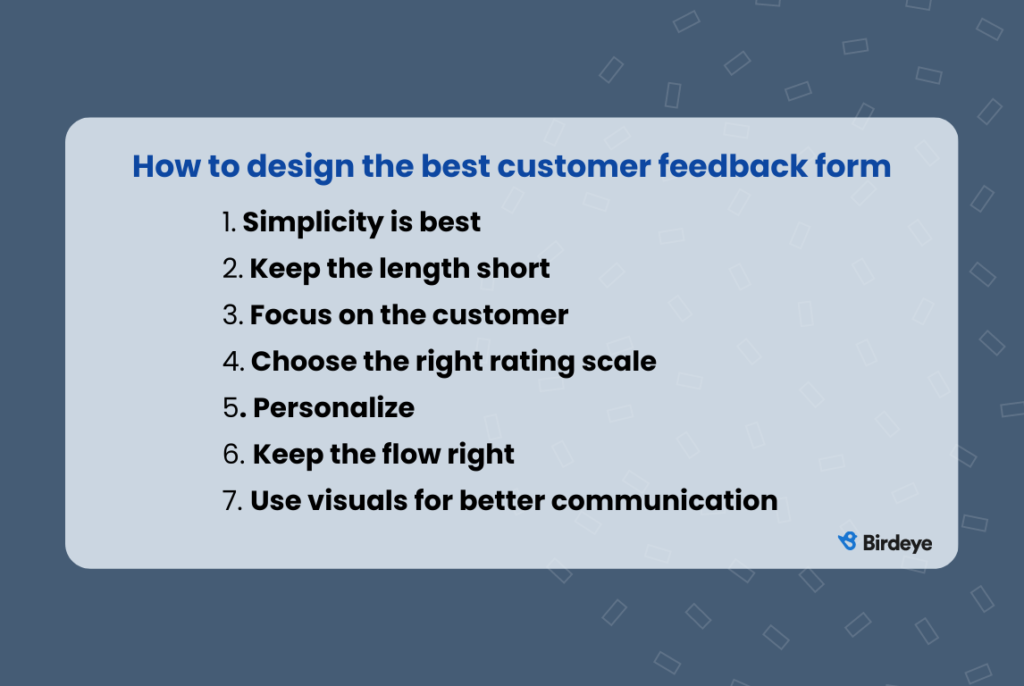
Simplicity is best
Keep the form questions to a minimum. You don’t want to annoy or overwhelm your customers with hard to navigate forms, difficult questions, or lengthy content. Use simple words and phrases that make the form quick to complete.
If you feel texting has been a successful marketing and communication tool for your business, leverage the same for surveys too. Allow customers to send responses via text messages using tools like Birdeye. This keeps the survey simple and conversational, encouraging customers to respond faster.
Keep the length as short as possible
If you want customers to respond to your feedback forms, ask the right questions and keep it short. Don’t make your surveys too long, as this may cause “respondent fatigue,” in which customers become tired or bored of the task and quit. Asking only a few questions will also increase the quality of answers you receive.
Focus on the customer
Be intentional and include survey questions that have clear objectives of understanding your customers’ experience. Determine their pain points or figure out the things your customers want most to focus on them first. Don’t forget to inform clients why the survey is important and how the feedback is meant to help them. This can help encourage them to give complete and honest answers.
Choose the right rating scale
To avoid frustrating your customers with lengthy feedback surveys, consider using a Net Promoter Score (NPS) instead. This rating scale asks simple questions like, “How likely are you to recommend (company or product) to a friend or colleague?” The response scale ranges from zero, indicating not at all likely, to 10, indicating extremely likely.
You can average the responses across your entire customer base to understand how customers perceive your business.
Personalization is best
Within the feedback form, use custom variables and logic to create a more personalized experience for your customers. This can be done by including the client’s name, last purchase, and other relevant information in the questions.
Logic functions enable you to create conditional branching within the survey with follow-up questions customized based on the answers given especially in NPS-style single question surveys.
Birdeye Surveys allow you to customize surveys based on each customer type so that you can capture authentic responses that help your business.
Keep the flow right
Maintain a logical flow to the questions to keep customers engaged. The order of questions should match the same flow as it’s experienced.
If the customers get veered off topic while they were answering about a particular feature/product, it hampers the user experience. They may not be able to completely follow the next questions and the quality of feedback you receive would suffer.
Test the feedback forms internally to make sure the flow is right before you circulate it to customers.
Use visuals for better communication
It is important that the feedback form has visual aids to enhance engagement. If possible, add pictures of the product, infographics and other aids to improve the readability of the form.
Focus on design aspects such as images, color selection, font choice, white space, and so on to design a visually appealing form.
Best feedback form examples for inspiration
Now let’s look at the best examples of feedback forms that apply these techniques in real-life.
Office Depot
In our first example, let’s see how big box office retailer Office Depot leverages customer feedback form. The company sends customer satisfaction forms right after a purchase. What we like about Office Depot’s feedback form is that it is simple and to the point. This makes it convenient and appealing for customers to complete the survey.
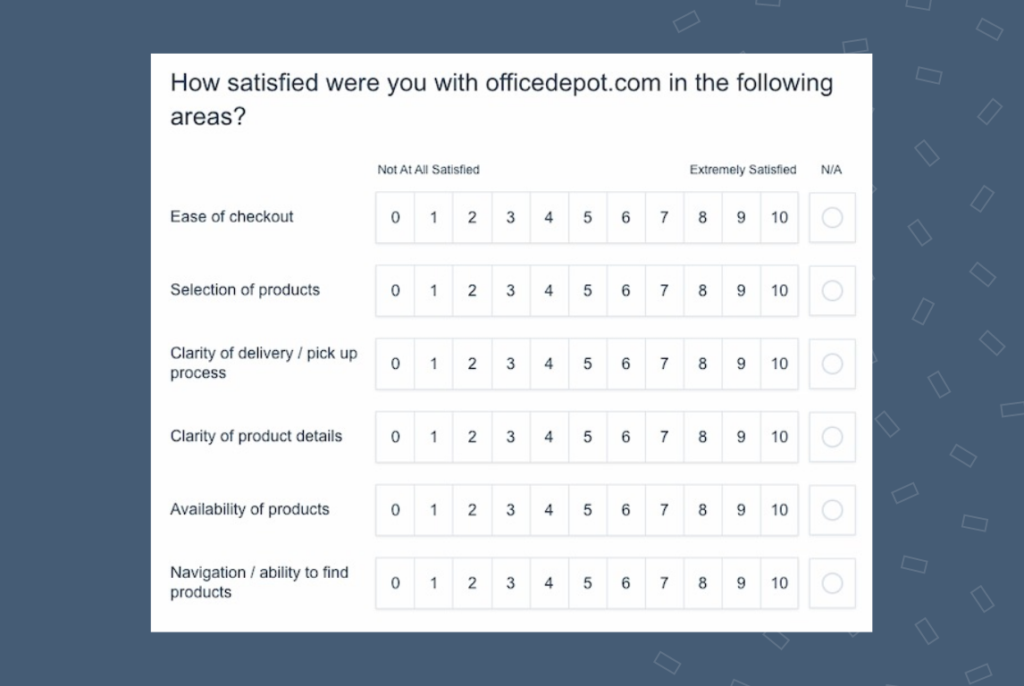
This feedback form also utilizes the NPS rating system to gauge customer shopping experience with Office Depot. The language emphasizes the shopping experience’s positive aspects and allows customers to agree or disagree.
You can use an NPS feedback form like this to gain valuable insights into customer satisfaction with your business and pinpoint areas that need improvement.
Asana
In this example, Asana nails it with a short and sweet customer churn feedback form that seeks to understand why a customer wants to cancel their membership. Instead of asking broad questions, Asana narrows it down to the customer’s specific reasons for opting out. They also use visual aids that emphasize their brand identity while asking questions.
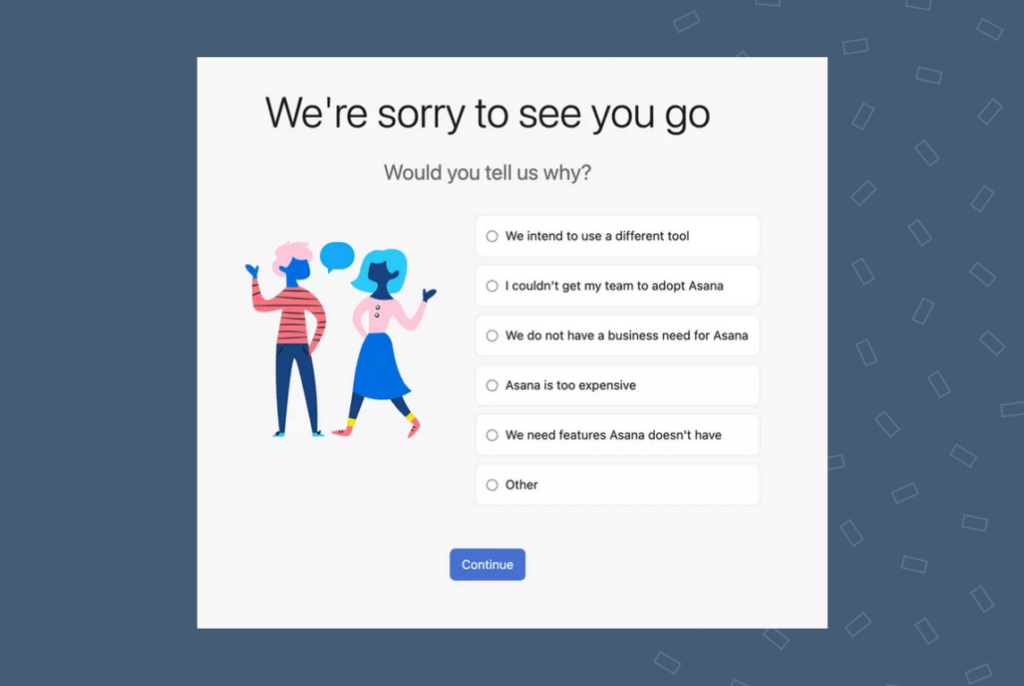
As a result, customers have an impression that their feedback is valuable and will likely impact the business. This type of feedback form is particularly useful when you want to convince your customers that you care about them and are actively working to better the product.
Patagonia
Outdoor apparel company Patagonia collects detailed information and makes sure its customers provide detailed and specific feedback via their feedback form.
Here’s one of their user experience feedback forms asking customers to share opinions about Patagonia’s website experience (UX).
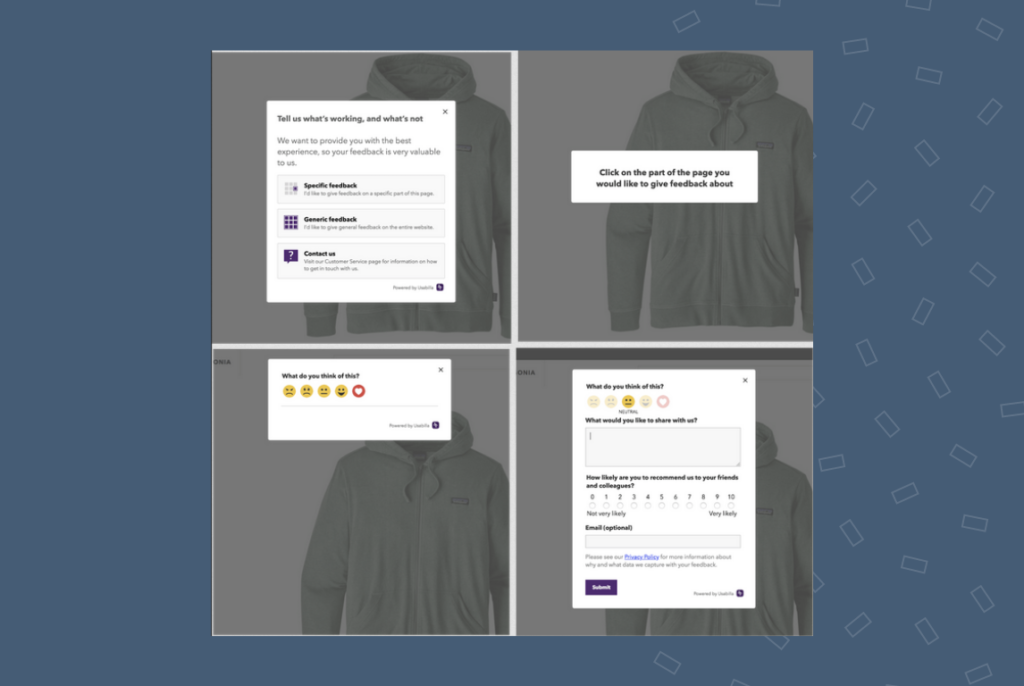
The brand asks customers to select which specific parts of pages or UI elements they would like to comment on. With these insights, Patagonia could pinpoint the exact areas that require attention or improvement.
Creating an individualized and fun experience for your customers can significantly increase customer response rates.
Netflix
Here’s a great example of customer preference feedback from Netflix that assesses what streaming categories the company should prioritize.
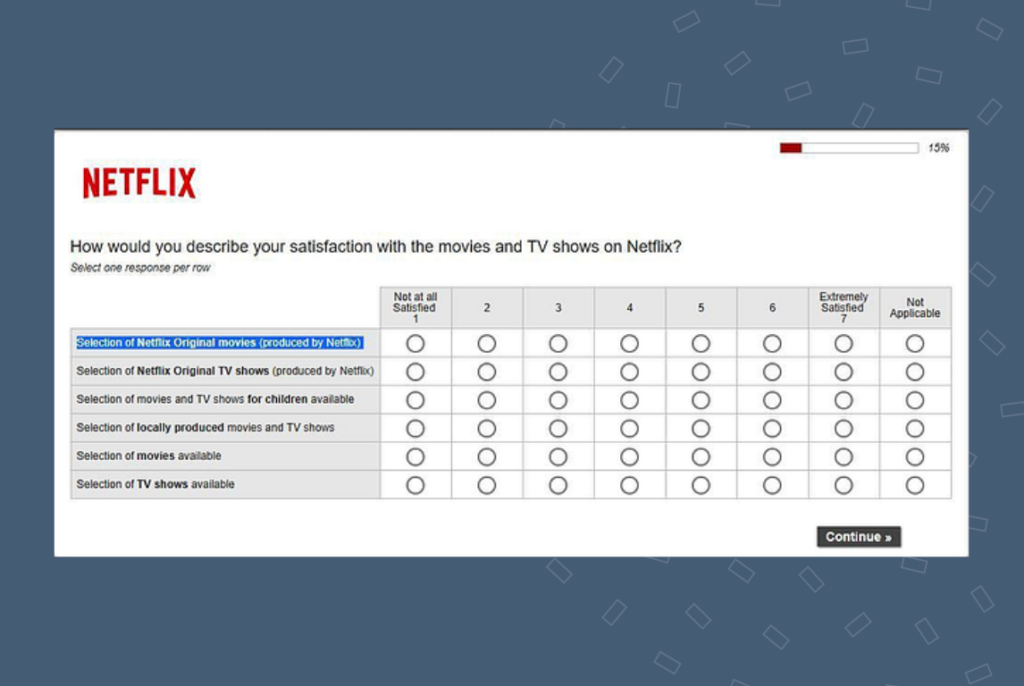
In such a competitive environment, Netflix uses these insights to ensure its shows satisfy the subscribing customers. If not, the brand risks losing them to other streaming services. This customer feedback form design highlights how using a consistent language and rating scale can simplify how you gather feedback from customers on complex topics.
Subway
Subway is another popular brand that uses feedback forms. The sample form below helps the company capture data about the customer experience, prompting survey takers to rate their recent Subway restaurant engagement. This form is intended for immediate use following a customer visit.
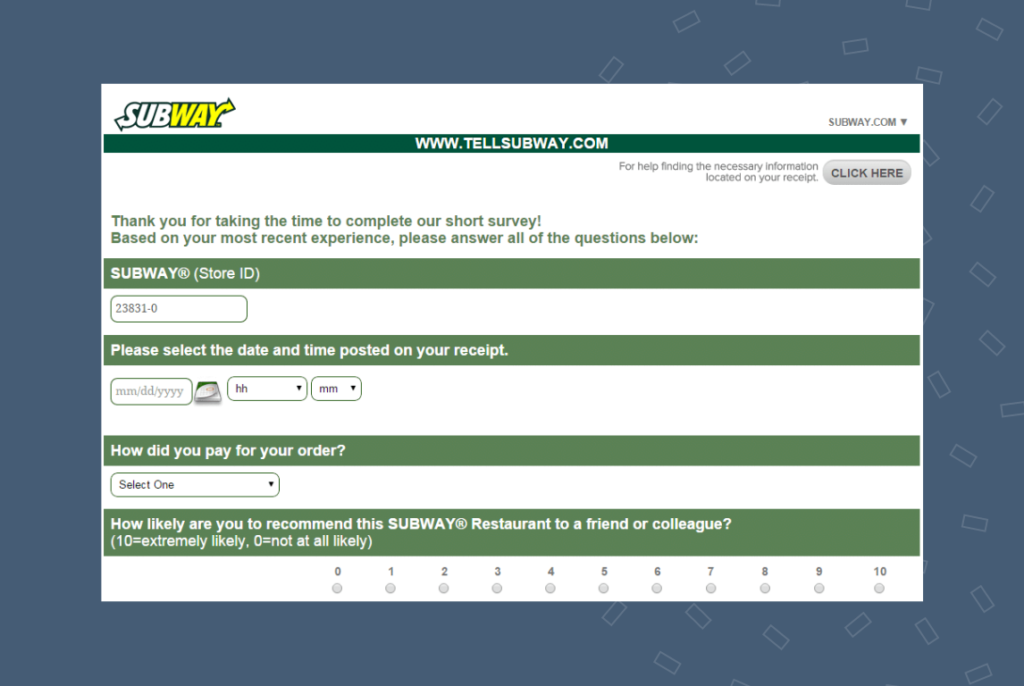
And it additionally prompts with questions regarding the freshness of the sandwiches and the friendliness of the staff. It works well, too, as a potential referral resource since it asks how likely survey takers are to recommend Subway.
Frequently asked questions about feedback forms
Feedback forms are important as they help capture valuable insights about the customer experience so you can improve satisfaction levels.
The seven types of customer feedback include sales feedback, customer satisfaction, brand loyalty feedback, customer preference feedback, product and brand health feedback, onboarding feedback, and complaints.
Feedback questions to include in the feedback form are: How can we make this web page better? What innovative features would you like to see in our service app? How was your overall shopping experience on the site?
There are two core types of customer feedback in business which include feedback customers give you without asking (e.g., bug reports and feature requests) and feedback you ask for (e.g., customer surveys and reviews.)
A good feedback form should include intentional questions that are straight to the point. Use consistent and straightforward language that is easy to understand.
Create customer feedback forms that impact your business
Understanding how your existing and new customers interact with your business is essential to improving your business. Not only will your customers feel valued when you ask them for feedback, but you will also become more effective at addressing your customers’ needs. We hope these feedback form examples will provide a solid starting point for your business. And, if you’re looking for an effective way to automate surveys and track customer feedback, try Birdeye’s survey feature.
Birdeye’s survey tool allows businesses to create and send customized customer surveys to gather feedback, reviews, and ratings. Choose from a list of pre-designed survey templates and customize your feedback forms to fit your specific business goals. Lastly, Birdeye lets you send your surveys to customers through email, SMS, and social media so you can quickly start collecting feedback.

Originally published


